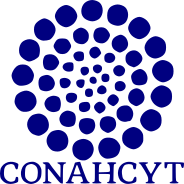USO DE LA CORTEZA DEL CORÓNGORO ZiZiphus amole (SESSé & MOC.) M.C. JOhNST. EN LA MEDICINA TRADICIONAL XOChIPALENSE
Abstract
The aim of this study was to assess the
knowledge and medicinal use of corongoro,
Ziziphus amole (Sesse & Moc.) M.C. Johnst.,
as reported by the inhabitants of Xochipala,
Guerrero, through a questionnaire and to
analyze their responses through statistical
analysis. Fruits, leaves, stems, and bark were
collected, and botanical specimens were
208
Núm. 32: 207-218 Agosto 2011
prepared for taxonomic confirmation. A
stratified random sampling was performed,
and a questionnaire with general questions
was given to 107 respondents. Data analysis
was based on a binary assessment by assigning
a value of zero (0) for “No” and one (1) for
“Yes.” The maximum potential knowledge
value of each respondent about the plant (OP)
was calculated. Subsequently, a canonical
discriminant analysis (CDA) was carried out
to assess the conditions for which the tree bark
was used by means of the Statistical Analysis
System (SAS) program. The OP was 0.63,
which showed that the informants have a
broad knowledge of the biology and medicinal
uses of the plant. The CDA showed that the
percentage of variation for the use of Z. amole
bark was as follows: 38.1% for wounds, 27.7%
for diabetes, diarrhea, asthma, hemorrhoids,
and other conditions, 15.2% for stomach pain,
and 11.3% for grains. The average weight of
the bark used in preparations was 9.29 g L-1.
Respondents aged 60 or over use corongoro
bark for wounds and less frequently for grain,
whereas those aged 15 to 23 use it for diabetes,
diarrhea, asthma, hemorrhoids, stomach pain,
and other conditions. No cases of poisoning
due to the use of the bark have been reported.
Downloads
Published
Issue
Section
License

Polibotánica by Departamento de Botánica de la Escuela Nacional de Ciencias Biológicas del Instituto Politécnico Nacional se distribuye bajo una Licencia Creative Commons Atribución-NoComercial-CompartirIgual 4.0 Internacional.




















